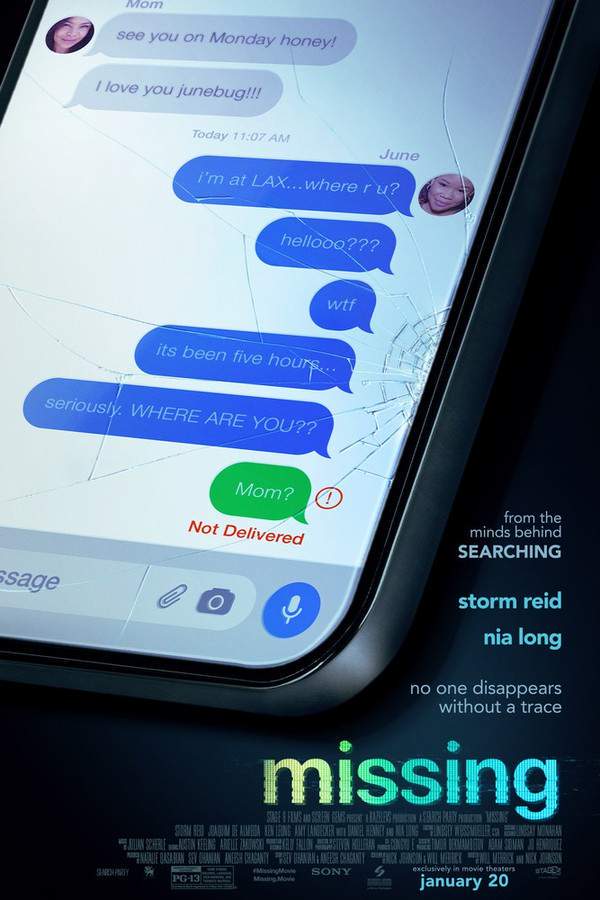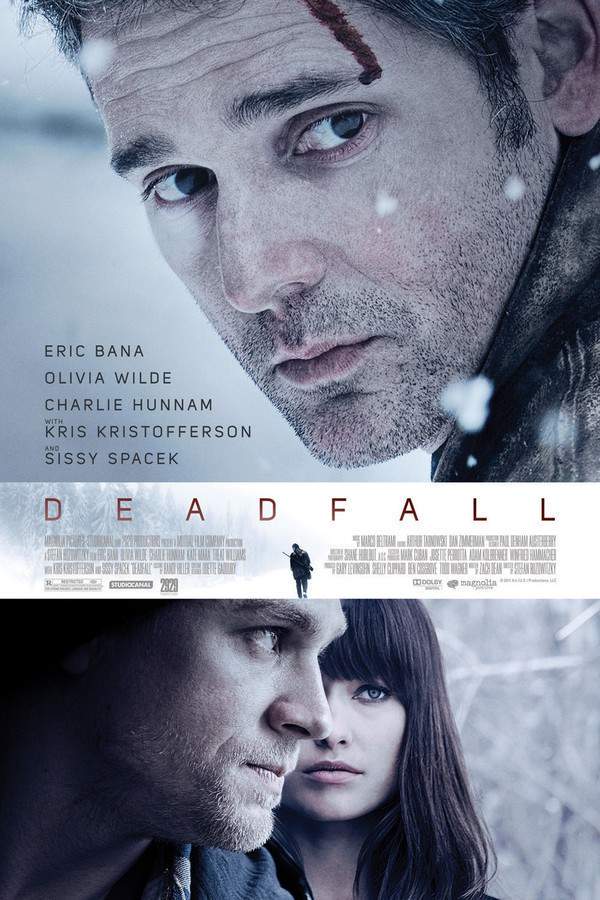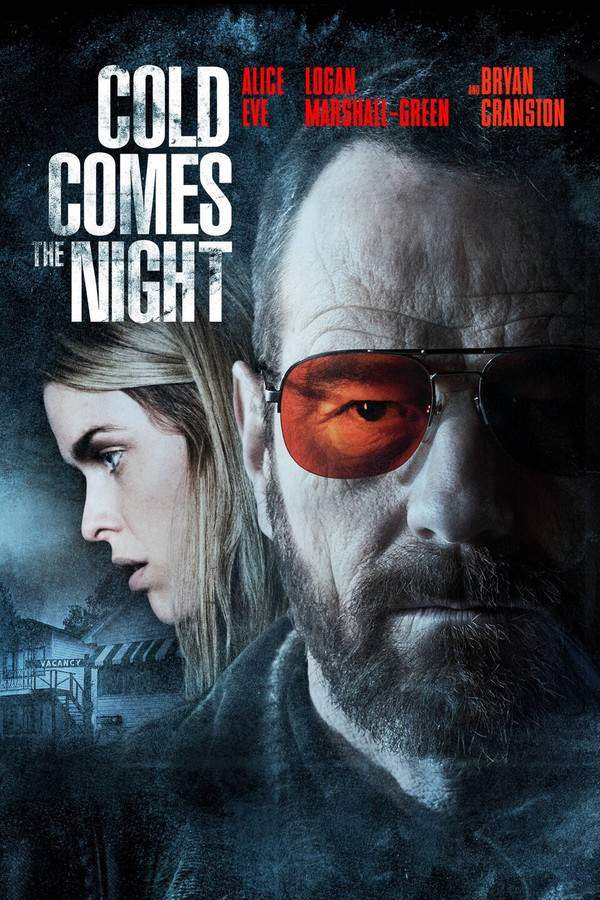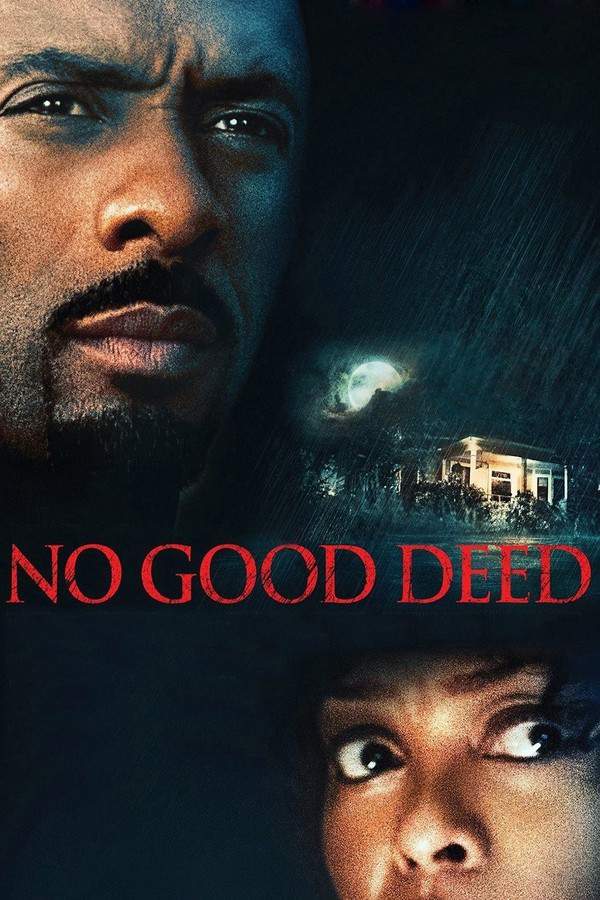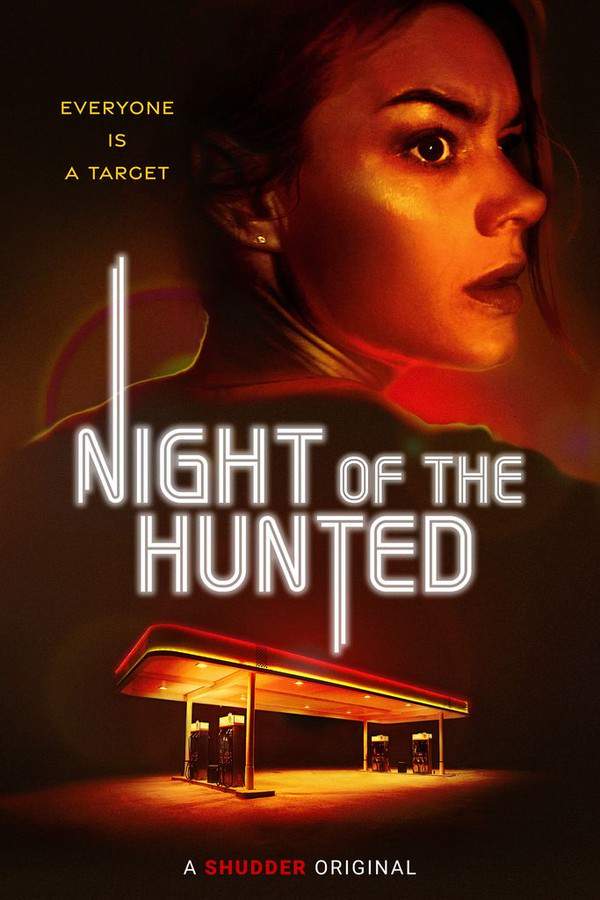
No Exit 2022
Directed by

Damien Power
Made by

Hulu
Test your knowledge of No Exit with our quiz!
No Exit Plot Summary
Read the complete plot summary and ending explained for No Exit (2022). From turning points to emotional moments, uncover what really happened and why it matters.
In a stark and suffocating chamber of everlasting torment, three troubled souls find themselves trapped together by a mysterious valet. The individuals—Joseph Garcin, [Inèz Serrano], and [Estelle Rigault]—are surrounded by a setting that strikingly mirrors the lavishness of 19th-century France. As they grapple with their bleak reality, they come to understand that what they initially expected as a tormenting punishment has instead morphed into a disconcerting routine of monotony.
At first, denial reigns as each tries to blame their catastrophic situations on external factors. Garcin maintains he was executed for living by his pacifist principles while Estelle insists on a case of mistaken identity. In contrast, Inèz is more insightful, resolutely declaring that they are all to blame for their moral failings, refusing to let them avoid the truth.
As Inèz’s perceptive nature kicks in, she starts to grasp the genuine reason for their collective imprisonment: they are not there to suffer in solitude but rather to act as instruments of each other’s torment. This realization instigates an unsettling shift as they navigate their new reality rife with discomfort.
In a bid to restore some sense of normality, Garcin proposes a fragile truce: a pact of silence to avoid further discomfort. However, Inèz, with her spirited nature, soon breaks this uneasy calm. She begins to sing haunting tunes tied to themes of execution, while Estelle frantically seeks a mirror to check her own image. Inèz, wanting to seduce Estelle, offers herself as a metaphorical mirror, revealing all the details she notices. Unfortunately, this only intimidates Estelle further. The entangled dynamics grow more complex, with Inèz drawn to Estelle, Estelle captivated by Garcin, and Garcin aloof from both women.
In this oppressive atmosphere, their relationships are forged in shared despair, compelling each character to cling to their identities as the lines between tormentor and tormented blur. They are forced to confront their inner demons and the dark truths surrounding their fellow damned.
As the trio’s tension spikes, they ultimately decide to confess their darkest secrets, searching for clarity amid their convoluted relationships. Garcin reveals his infliction of pain on his wife, which led to his execution by firing squad for abandoning his country. Inèz discloses her manipulative actions that drove her cousin’s wife, Florence, to suicide. Meanwhile, Estelle recounts the tragic fallout of her affair that resulted in the death of her child. Despite these earnest confessions, the friction among them only intensifies.
As their mutual animosity builds to a boiling point, Garcin finds himself increasingly drawn to Estelle’s bold pursuits, which stirs anger within Inèz. Yet, Garcin’s guilt consistently disrupts his surrender, prompting him to seek reassurance from Estelle that he isn’t a coward for his wartime desertion. Estelle willingly agrees, but Inèz retorts with razor-sharp sarcasm, hinting that Estelle’s affections are transparent illusions, allowing her to play at love with any man.
This confrontation ignites an urgency within Garcin to flee, but he discovers that the door only opens to reject him, working against his frantic efforts. In a desperate conclusion, Garcin realizes that “hell is other people,” a haunting epiphany that leaves him utterly despairing for Inèz’s consideration. Meanwhile, Estelle continues her fruitless advances on Garcin, who rebuffs her while Inèz observes, leading to frustration boiling over.
In a climactic outburst, Estelle lunges at Inèz with a paper knife, only to face Inèz’s fierce defiance that they are all already deceased. In a darkly comic twist, the trio erupts into hysterical laughter, reaching an eerie acceptance of their grim reality. With this somber understanding, Garcin finally declares, > “Eh bien, continuons…” (“Well then, let’s get on with it…”), marking the dirge-like initiation of their descent into madness and despair.
No Exit Timeline
Follow the complete movie timeline of No Exit (2022) with every major event in chronological order. Great for understanding complex plots and story progression.
Trapped in Torment
Three troubled souls, Joseph Garcin, Inèz Serrano, and Estelle Rigault, find themselves imprisoned in a stark chamber of everlasting torment. This chamber bears the richness of 19th-century France, a contrast that highlights their bleak reality.
Denial and Blame
Initially, the trio struggles with denial, each attempting to shift the blame for their circumstances onto external factors. Garcin claims he was executed for his pacifist stance, while Estelle believes her predicament arises from a mistaken identity.
The Blame Game
Inèz stands out with a sharp insight, asserting that they all share responsibility for their moral failings. She forces Garcin and Estelle to consider uncomfortable truths about their own actions and decisions.
Realization of Torment
As Inèz's perceptive nature deepens, she comprehends the true reason for their imprisonment: they are instruments of each other's suffering. This unsettling revelation shifts their interaction from mere existence to a complex web of torment.
Proposing a Truce
In an attempt to restore normalcy, Garcin proposes a fragile pact of silence among them. However, Inèz disrupts this uneasy calm by singing haunting melodies that echo their dark fates, breaking the silence and intensifying the tension.
The Mirror as Metaphor
Inèz offers to be a metaphorical mirror for Estelle, aiming to reveal her truths. However, instead of drawing Estelle closer, this only evokes fear and intimidation, complicating their already tangled relationships.
Confession of Secrets
The trio ultimately decides to reveal their darkest secrets to gain clarity amid their tumultuous interactions. Garcin confesses to his wife's pain, Inèz discusses her manipulative actions leading to a suicide, and Estelle recounts the tragic consequences of her affair.
Building Tensions
As they share their secrets, the friction between the characters escalates. Garcin's guilt over his past complicates his feelings toward Estelle, while Inèz's sardonic remarks stir up deeper conflicts and jealousy.
Garcin's Desperation
Feeling increasingly trapped, Garcin yearns to escape but realizes the door only closes him off. His contemplation that 'hell is other people' becomes a poignant reflection on their shared anguish and interdependence.
Conflict Erupts
In a culmination of their escalating tensions, Estelle attacks Inèz with a paper knife, only to be met with Inèz's fierce defiance that they are all already deceased. This confrontation brings their reality into stark relief.
Laughter in Despair
In a darkly comedic moment, the trio erupts into hysterical laughter, marking an eerie acceptance of their grim reality. Their laughter signals a chilling acknowledgment of their shared fate and the madness that ensues.
Acceptance of Fate
With a somber understanding of their situation, Garcin finally states, 'Eh bien, continuons...' This phrase signifies their resigned acceptance of their hellish existence and the despair that accompanies their eternal torment.
No Exit Characters
Explore all characters from No Exit (2022). Get detailed profiles with their roles, arcs, and key relationships explained.
Joseph Garcin
Garcin is an emotionally complex character who grapples with guilt and denial about his past actions, particularly the pain he inflicted upon others. His struggle for validation leads him to seek reassurance from Estelle, revealing his deep-seated fears of cowardice and judgment. Throughout the film, Garcin's interactions foreshadow a desperate quest for redemption amidst the chaos.
Inèz Serrano
Inèz serves as the most perceptive and cynical of the trio, often cutting through pretense to reveal uncomfortable truths. Her manipulative nature and blunt honesty compel the other characters to confront their realities, making her a pivotal figure in their emotional unraveling. Inèz is drawn to both Garcin and Estelle, adding layers of tension to their dysfunctional dynamics.
Estelle Rigault
Estelle is portrayed as vain and desperate for validation in her beauty and relationships. Her fixation on self-image drives her to increasingly erratic behavior, revealing her intense fear of rejection. Despite her outward charm, Estelle's internal struggles reflect the tragic consequences of her past actions, making her a poignant character representing lost motherhood and emotional turmoil.
No Exit Settings
Learn where and when No Exit (2022) takes place. Explore the film’s settings, era, and how they shape the narrative.
Time period
19th Century
The narrative unfolds during the 19th century, a time marked by significant social and political upheaval in France. The era is known for its philosophical explorations, particularly existentialism, which resonates deeply throughout the characters' interactions and the existential themes of the movie. This period's cultural nuances add depth to the characters' internal conflicts as they confront their moral failings.
Location
19th-century France
The movie takes place in a stark and oppressive chamber reflective of the lavish yet suffocating atmosphere of 19th-century France. This setting is characterized by an intricate blend of elegance and torment, symbolizing the characters' mental and emotional struggles. The lavish surroundings contrast sharply with their dire circumstances, encapsulating the theme of entrapment.
No Exit Themes
Discover the main themes in No Exit (2022). Analyze the deeper meanings, emotional layers, and social commentary behind the film.
😈
Existentialism
The film profoundly explores themes of existentialism, emphasizing the notion that individuals are trapped not just by their circumstances but also by their relationships with others. This gray reality illustrates how human connections can become sources of torment, blurring the lines between tormentor and tormented. The characters' struggles for identity and self-acceptance symbolize the deeper philosophical inquiries of existence.
💔
Despair
Despair permeates the interactions among the protagonists, highlighting their collective emotional suffering and isolation. As they confront their dark pasts, their relationships become increasingly fraught, exposing vulnerabilities and regrets tied to love and betrayal. This theme resonates with the characters' cyclical, suffocating conflict, illustrating that their imprisonment is both physical and psychological.

Coming soon on iOS and Android
The Plot Explained Mobile App
From blockbusters to hidden gems — dive into movie stories anytime, anywhere. Save your favorites, discover plots faster, and never miss a twist again.
Sign up to be the first to know when we launch. Your email stays private — always.
No Exit Ending Explained
Unravel the ending of No Exit (2022) with our detailed explanation. Understand the final scenes, character fates, and unresolved questions.
Darby, the main character, is a recovering addict who finds herself stranded in a snowbound visitor’s center while rushing to see her dying mother. Her concern for a kidnapped girl named Jay stems from her own feelings of loneliness and separation from her family, which drives her to protect the child as a surrogate for the love she craves. Throughout the film, Darby’s actions—such as snorting cocaine to muster the strength to save Jay and risking her own life—highlight her desperate attempt at redemption and connection, despite her troubled past with addiction and family rejection. Her character arc explores themes of guilt, resilience, and the human capacity for sacrifice.
As the story unfolds, we learn that the other characters have their own complex backgrounds—Ed and Sandi are driven by financial desperation, with Sandi resorting to kidnapping and ransom, and Ed being the more pragmatic partner. The brothers Ash and Lars are involved in child kidnapping for their foster dad, Uncle Kenny. Lars, the more compassionate of the two, shows signs of kindness, but ultimately, violence erupts when Ash kills Lars to cover their tracks.
The climax reveals that Darby’s message from a dead cop’s communicator prompts the police to intervene, leading to her rescue. In the final scenes, Darby is back at the rehab center, where she holds a drawing made by Jay, symbolizing the bond they formed. The appearance of her sister, Devon, suggests that her family may be willing to forgive and reconnect with her. However, her ongoing stay at rehab indicates she’s still struggling—for her addiction or for processing the trauma from her ordeal. Ultimately, the ending hints at a fragile possibility of reconciliation and healing, with Darby taking her first tentative steps toward a better future, both with her family and within herself.
No Exit Spoiler-Free Summary
Discover the spoiler-free summary of No Exit (2022). Get a concise overview without any spoilers.
Amid a relentless winter storm, a solitary highway rest stop becomes a bleak sanctuary against the howling blizzard. The snow‑driven isolation turns the cramped, fluorescent‑lit space into a pressure cooker where every creak of the metal doors and flicker of the neon sign feels amplified. The atmosphere is cold not only in temperature but in the palpable sense of dread that settles over the empty parking lot, hinting at unseen dangers lurking beyond the glass.
Darby arrives seeking a brief respite, only to find the stop already occupied by a handful of strangers whose nervous energy matches the storm outside. The thin veil of civility quickly frays as she discovers a frightened young girl hidden somewhere within the building, a revelation that shatters any notion of safety. The captive’s presence injects a raw urgency into the already tense environment, turning ordinary interactions into a careful dance of suspicion and protectiveness.
The film’s tone balances stark, almost clinical realism with a creeping, psychological unease. Shadows stretch across the tiled floors as the power flickers, and the endless white beyond the windows mirrors the growing sense of entrapment. Each character’s motives remain ambiguous, and the claustrophobic setting forces Darby and the others to confront the unsettling layers of human behavior that surface when survival is at stake. The remote location becomes a character in itself—its unforgiving weather and barren landscape amplifying the inner turmoil of those trapped inside.
As the storm shows no sign of abating, the rest stop transforms into a crucible where trust is scarce and every whispered conversation carries weight. Darby must navigate a maze of hidden intentions, uneasy alliances, and the mounting pressure of an unseen threat, all while the frozen world outside seems to close in, promising that escape—if it comes at all—will demand far more than simply stepping through a door.
Can’t find your movie? Request a summary here.
Movies with Similar Twists and Themes
Uncover films that echo the narrative beats, emotional arcs, or dramatic twists of the one you're exploring. These recommendations are handpicked based on story depth, thematic resonance, and spoiler-worthy moments — perfect for fans who crave more of the same intrigue.
Featured on this page

What's After the Movie?
Not sure whether to stay after the credits? Find out!
Explore Our Movie Platform
New Movie Releases (2026)
Famous Movie Actors
Top Film Production Studios
Movie Plot Summaries & Endings
Major Movie Awards & Winners
Best Concert Films & Music Documentaries
Movie Collections and Curated Lists
© 2026 What's After the Movie. All rights reserved.


